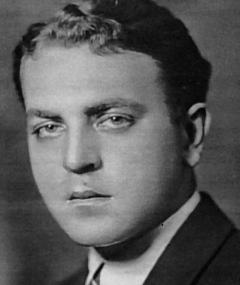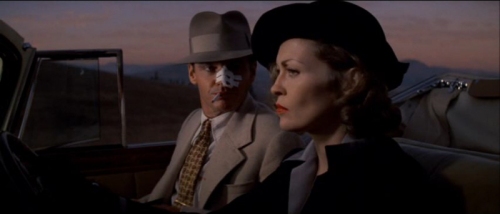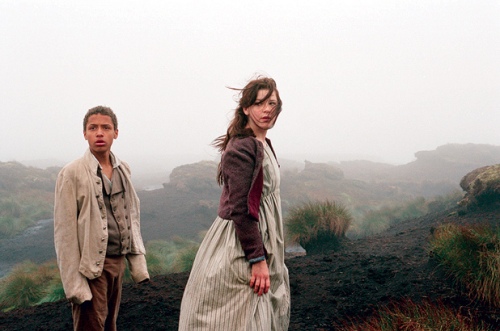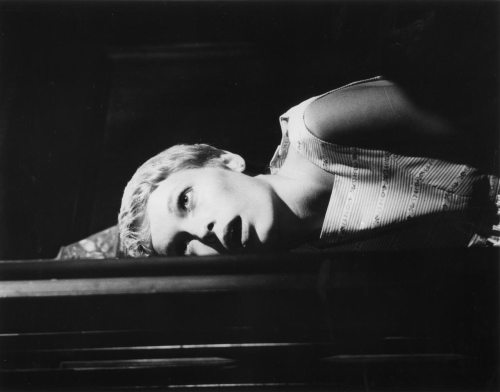[My father] was a kind of hack, but he enjoyed the challenge that came with turning hack work into something special, to take an impossible thing and do something with it. There is a sort of pride in being a whore. He saw a certain honesty in being able to make a living.” —Val Edwin Lewton, Jr.
Despite years of marginalization and an unfortunately brief body of work, Val Lewton—born Vladimir Ivanovich Leventon in what is now Ukraine in 1094—has become key figure in America cinema. He began his artistic career as a novelist before entering filmmaking, his first credit coming in the form of “revolution sequences arranged by” in MGM’s A Tale of Two Cities. From there, he became the head of the horror unit at RKO Radio Pictures, where he amassed a truly unique body of work.
Save for two pseudonymous writing credits on Bedlam and The Body Snatcher—for which he assumed the name Carlos Keith, a moniker he often used when writing pulp novels for Vanguard Press in 1932—Lewton was credited solely as producer on each of his films. Of course, historical record and years of critical analysis prove Lewton was no mere producer; but there remains a unique relationship between Lewton, the key author of his films, and his directors, who, in any other circumstance, would be considered the key author.
The first three films Lewton created for RKO were in collaboration with Jacques Tourneur, a director who belongs in the annals of cinema history but who has only recently received the sort of critical evaluation reserved for the greatest of filmmakers. Together, Lewton and Tourneur made three films: Cat People (1942), I Walked with a Zombie (1943), and the The Leopard Man (1943). Collectively, these films signify a certain way of thinking about and creating horror films. As a producer, Lewton was never concerned with making movies that relied solely on cheap and predictable B-movie gimmickry. Psychological nuances exist below the narrative of each film and reveal themselves in ways that are at once disarming. He understood that genre cinema, though seemingly conventional given its instilled guidelines, was capable of eliciting real emotion and tackling pertinent social issues.
Cat People, aside from being grade-A entertainment in lieu of its B-level status, is a watershed moment for Lewton in addition to being a key text in the Tourneur oeuvre. For Lewton, the film marks the beginning of a superlative if pithy producing career, as well as the introduction of the imperative “Lewton Bus” technique (more on that later); for Tourneur, Cat People is a sort of thematic harbinger for his later work—the hero’s aversion to European customs in Berlin Express; the gap between art and fashion in Nightfall; the actual appearance of cats in Way of a Gaucho, Stranger on Horseback, and others—in addition to being a crystalline summation of his early short films, incorporating aspects of The Face Behind the Mask, The Ship That Died, and the What Do You Think? serials.
It tells the story of American man (Kent Smith) who marries a Serbian-born fashion artist (Simone Simon). Their idyllic relationship is put to the test by Simone’s belief in an ancient curse she’s carried down from her ancestors, which causes her to turn into a evil panther whenever emotionally or physically aroused. This puts an obvious strain on their marriage, but Smith makes matters worse when he assumes Simon is simply delusional. Before long, he falls for his more conventional co-worker (Jane Randolph), sending Simon into a jealous furor.

Lewton’s films were often poorly advertised and rarely represented what the films were actually about.
Lewton possessed great savvy as a producer. Considering the restrictive nature of working in B pictures, he made any would-be limitation work for him rather than against him. When literally forced to make a film about people who turn into cats—RKO demanded he make a movie called Cat People before a script had even materialized—let a lack of funds and resources fall by the wayside and instead created mood and intrigue via clever imagery and ambiguous narrative technique. With the help of Tourneur, cinematographer Nicholas Musuraca, and editor Mark Robson, Cat People became a veritable clinic in mood and tone, incorporating elements of sound design, expressionistic lighting, and elliptical editing as means to avoid actually having to show scenes of Simon turning into a panther.
The now-famous pool scene featured in is perhaps the most sterling example of how Lewton could take simple scenarios and craft moments of pure cinema from them. In the scene, Randolph takes a dip in an indoor pool. Having already begun her courtship with Smith, Randolph is unknowingly being stalked by Simon, who follows her into the pool room. Here, Randolph’s fear of Simon and her supposed curse manifests itself in the film’s mis-en-scene. The waves from the pool bounce and radiate off the walls of the room, yet Musacara’s evocative and highly contrasted cinematography is never compromised. Additionally, the sequence features an intricate sound design that places the viewer deep within the scene. Each noise leads to second-guessing: what first sounded like a guttural growl is revealed to be a car in need of an oil change; the splashing of the water could just as easily be muffled footsteps.
The other key scene in Cat People is, of course, the “Lewton Bus” sequence. As Randolph makes her way home, here (justified) paranoia is again manifested in the intricate sound design and editing. What sounds like the low growl of an approaching predator is revealed to be the sound of an approaching bus, but the real kicker is the blending of a panther’s growl and the vehicle’s breaks. The primacy of sound in Lewton, even in his manipulation of it, renders it inseparable from his images, an inherently expressionistic stratagem he’d only perfect with subsequent films.
The atmosphere of the scene is a heightened version of what permeates each of the Lewton/Tourneur films. In other instances, the films are deeply psychological and play more like horrors of the mind. In Cat People, the character of Irena is deeply rooted in her past. As a result, many of the characters in the film are intimidated by her exoticness. These themes of cultural fear and distrust are expounded upon in I Walked with a Zombie, which flips the premise of Cat People and sees the milquetoast Betsy at odds with mysterious and bizarre surroundings. Additionally, the concurrent boundaries between rationality and skepticism seem to mar the characters and their ability to interpret the situations presented in the narrative. These boundaries are specific to each film, such as the space between human and animal (Cat People, The Leopard Man) and the living and the dead (I Walked with a Zombie), but each speak to Lewton’s preoccupation with the unknowable.


















